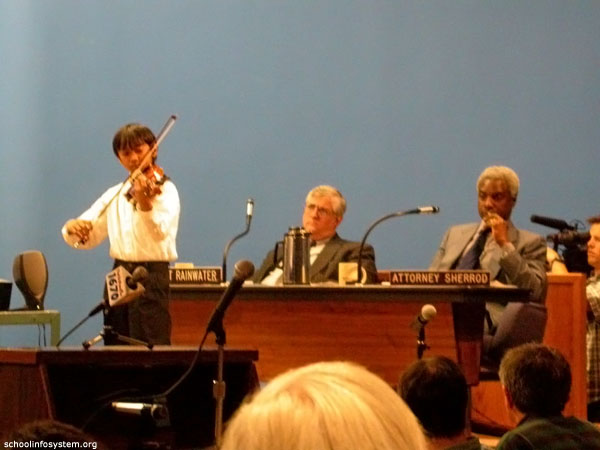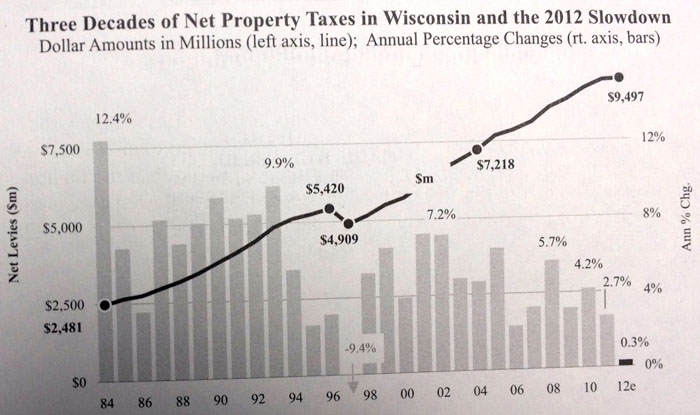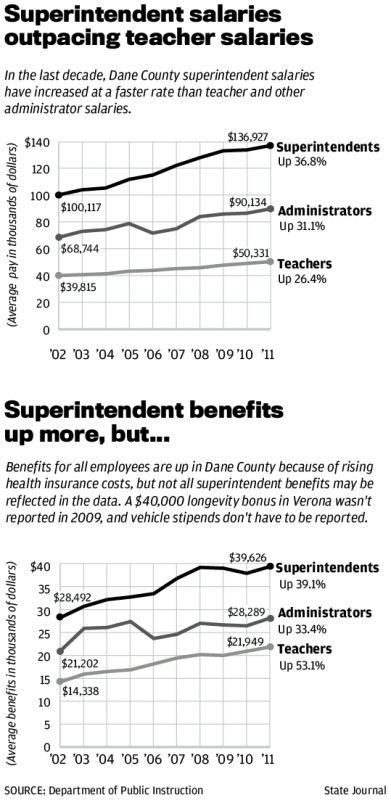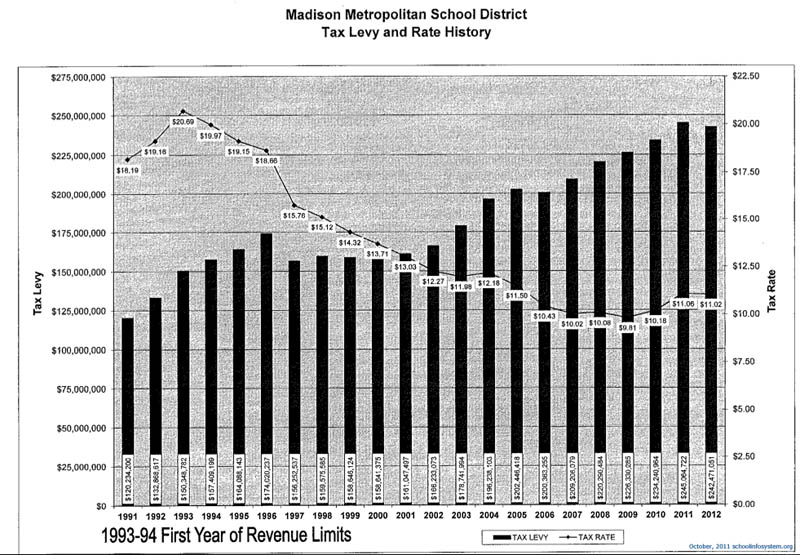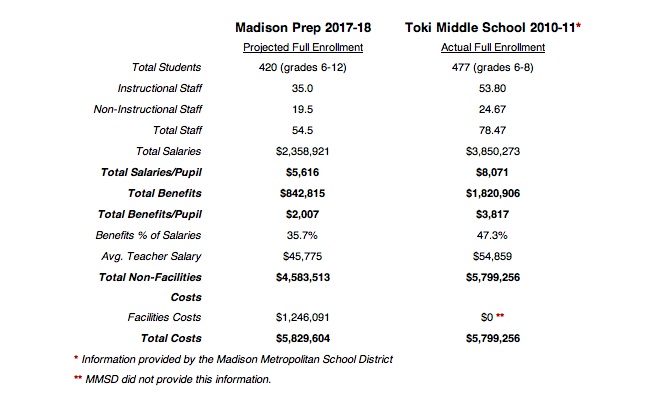December 11, 2011
Mr. Ed Hughes
Board of Education
Madison Metropolitan School District 545 West Dayton Street
Madison, WI 53713
Dear Mr. Hughes:
This letter is intended to respond to your December 4, 2011 blog post regarding the Madison Preparatory Academy initiative. Specifically, this letter is intended to address what you referred as “a fairly half-hearted argument [advanced by the Urban League] that the state statute authorizing school districts to enter into contracts for non-instrumentality charter schools trumps or pre-empts any language in collective bargaining agreements that restricts school districts along these lines.” Continuing on, you wrote the following:
I say the argument is half-hearted because no authority is cited in support and itjust isn’t much ofan argument. School districts aren’t required to authorize non-instrumentality charter schools, and so there is no conflict with state statutesfor a school district to, in effect, agree that it would not do so. Without that kind of a direct conflict, there is no basis for arguing that the CBA language is somehow pre-empted.
We respectfully disagree with your assessment. The intent of this letter is to provide you with the authority for this position and to more fully explain the nature of our concern regarding a contract provision that appears to be illegal in this situation and in direct conflict with public policy.
Background
As you are aware, the collective bargaining agreement (the “CBA”) between MMSD and MTI Iprovides “that instructional duties where the Wisconsin Department of Public Instruction requires that such be performed by a certificated teacher, shall be performed only by ‘teachers.”‘ See Article I, Section B.3.a. In addition, “the term ‘teacher’ refers to anyone in the collective bargaining unit.” See Article I, Section B.2. You have previously suggested that “all teachers in MMSD schools– including non-instrumentality charter schools- must be members of the MTI bargaining unit.” As we indicated in our December 3, 2011 correspondence to you, under a non-instrumentality charter, the school board may not be the employer of the charter school’s staff. See§ 118.40(7)(a).
Under Wisconsin’s charter school law, the MMSD School Board (the “Board”) has the exclusive authority to determine whether a school is an instrumentality or not an instrumentality of the school district. See§ 118.40(7)(a). That decisio n is an important decision reserved to the Board alone. The effect of that decision drives whether teachers and staff must be, or cannot be, employees of the Board. The language of the CBA deprives the Board ofthe decision reserved to it under the statute and that language cannot be harmonized to give effect to both the statute and the CBA. Alternatively, the CBA language creates a situation whereby the Board may exercise its statutory authority to approve a non- instrumentality charter, but it must staff the school with school district employees, a result clearly prohibited under the statute. For reasons that will be explained below, in our view, the law trumps the CBA in either of these situations.
Analysis
Under Wisconsin law, “[a]labor contract may not violate the law.” Glendale Professional Policeman’s Ass’n v. City ofGlendale, 83 Wis. 2d 90, 102 (Wis. 1978). City ofGlendale addressed the tension that can arise between bargained for provisions in a collective bargaining agreement and statutory language. In City of Glendale, the City argued that a provision dealing with job promotions was unenforceable because it could not be harmonized with statutory language. Specifically, the agreement in question set forth parameters for promoting employees and stated in part that openings “shall be filled by the applicant with the greatest department seniority…” City of Glendale, 83 Wis. 2d at 94. Wisconsin law provided the following:
The chiefs shall appoint subordinates subject to approval by the board. Such appointments shall be made by promotion when this can be done with advantage, otherwise from an eligible list provided by examination and approval by the board and kept on file with the clerk.
Wis. Stat.§ 62.13(4)(a).
The City contended that “the contract term governing promotions is void and unenforceable because it is contrary to sec. 62.13(4)(a), Stats.” City ofGlendale, 83 Wis. 2d at 98. Ultimately, the court ruled against the City based on the following rationale:
Although sec. 62.13(4)(a), Stats., requires all subordinates to be appointed by the chief with the approval of the board, it does not, at least expressly, prohibit the chief or the board from exercising the power of promotion of a qualified person according to a set of rules for selecting one among several qualified applicants.
The factual scenario in City ofGlendale differs significantly from the present situation. In City of Glendale, the terms of the agreement did not remove the ability of the chief, with the approval of the board, to make promotions. They could still carry out their statutory duties. The agreement language simply set forth parameters that had to be followed when making promotions. Accordingly, the discretion of the chief was limited, but not eliminated. In the present scenario, the discretion of the Board to decide whether a charter school should be an instrumentality or a non-instrumentality has been effectively eliminated by the CBA language.
There is nothing in the CBA that explicitly prohibits the Board from voting for a non-instrumentality charter school. This discretion clearly lies with the Board. Pursuant to state law, instrumentality charter schools are staffed by District teachers. However, non-instrumentality charter schools cannot be staffed by District teachers. See Wis. Stat.§ 118.40. Based on your recent comments, you have taken the position that the Board cannot vote for a non-instrumentality charter school because this would conflict with the work preservation clause of the CBA. Specifically, you wrote that “given the CBA complications, I don’t see how the school board can authorize a non-instrumentality Madison Prep to open its doors next fall, and I say that as one who has come to be sympathetic to the proposal.” While we appreciate your sympathy, what we would like is your support. Additionally, this position creates at least two direct conflicts with the law.
First, under Wisconsin law, “the school board of the school district in which a charter school is located shall determine whether or not the charter school is an instrumentality of the school district.” Wis. Stat. § 118.40(7)(a) (emphasis added.) The Board is required to make this determination. If the Board is precluded from making this decision on December 19″‘ based on an agreement previously reached with MTI, the Board will be unable to comply with the law. Effectively, the instrumentality/non- instrumentality decision will have been made by the Board and MTI pursuant to the terms and conditions of the CBA. However, MTI has no authority to make this determination, which creates a direct conflict with the law. Furthermore, the Board will be unable to comply with its statutory obligation due to the CBA. Based on your stated concerns regarding the alleged inability to vote for a non-instrumentality charter school, it appears highly unlikely that the Board ever intentionally ceded this level ofauthority to MTI.
Second, if the Board chose to exercise its statutorily granted authority on December 19th and voted for a non-instrumentality charter school, this would not be a violation of the CBA. Nothing in the CBA explicitly prohibits the Board from voting for a non-instrumentality charter school. At that point, to the extent that MTI chose to challenge that decision, and remember that MTI would have to choose to grieve or litigate this issue, MTI would have to try to attack the law, not the decision made by the Board. Pursuant to the law, “[i] f the school board determines that the charter school is not an instrumentality of the school district, the school board may not employ any personnel for the charter school.” Wis. Stat.§ 118.40(7)(a) (emphasis added). While it has been suggested that the Board could choose to avoid the legal impasse by voting down the non-instrumentality proposal, doing so would not cure this conflict. This is particularly true if some Board members were to vote against a non-instrumentality option solely based on the CBA. In such a case, the particular Board Member’s obligation to make this decision is essentially blocked. Making a decision consistent with an illegal contract provision for the purposes of minimizing the conflict does not make the provision any less illegal. “A labor contract term whereby parties agree to violate the law is void.” WERC v. Teamsters Local No. 563, 75 Wis. 2d 602, 612 (Wis. 1977) (citation omitted).
Conclusion
In Wisconsin, “a labor contract term that violates public policy or a statute is void as a matter of law.” Board of Education v. WERC, 52 Wis. 2d 625, 635 (Wis. 1971). Wisconsin law demonstrates that there is a public policy that promotes the creation of charter schools. Within that public policy, there is an additional public policy that promotes case-by-case decision making by a school board regarding whether a charter school will be an instrumentality or a non-instrumentality. The work preservation clause in the CBA cannot be harmonized with these underlying public policies and should not stop the creation of Madison Preparatory Academy.
The Madison Prep initiative has put between a rock and a hard place. Instrumentality status lost support because of the costs associated with employing members of MTI. Yet, we are being told that non-instrumentality status will be in conflict with the CBA and therefore cannot be approved. As discussed above, the work preservation clause is irreconcilable with Wisconsin law, and would likely be found void by acourt of law.
Accordingly, I call on you, and the rest of the Board to vote for non- instrumentality status on December 19th. In the words of Langston Hughes, “a dream deferred is a dream denied.” Too many children in this district have been denied for far too long. On behalf of Madison children, families and the Boards of the Urban League and Madison Prep, I respectfully request your support.
Respectfully,
Kaleem Caire
President & CEO
cc: Dan Nerad, Superintendent
Dylan Pauly, Legal Counsel
MMSD Board ofEducation Members
ULGMand Madison Prep Board Members and Staff
Godfrey & Kahn, S.C.
